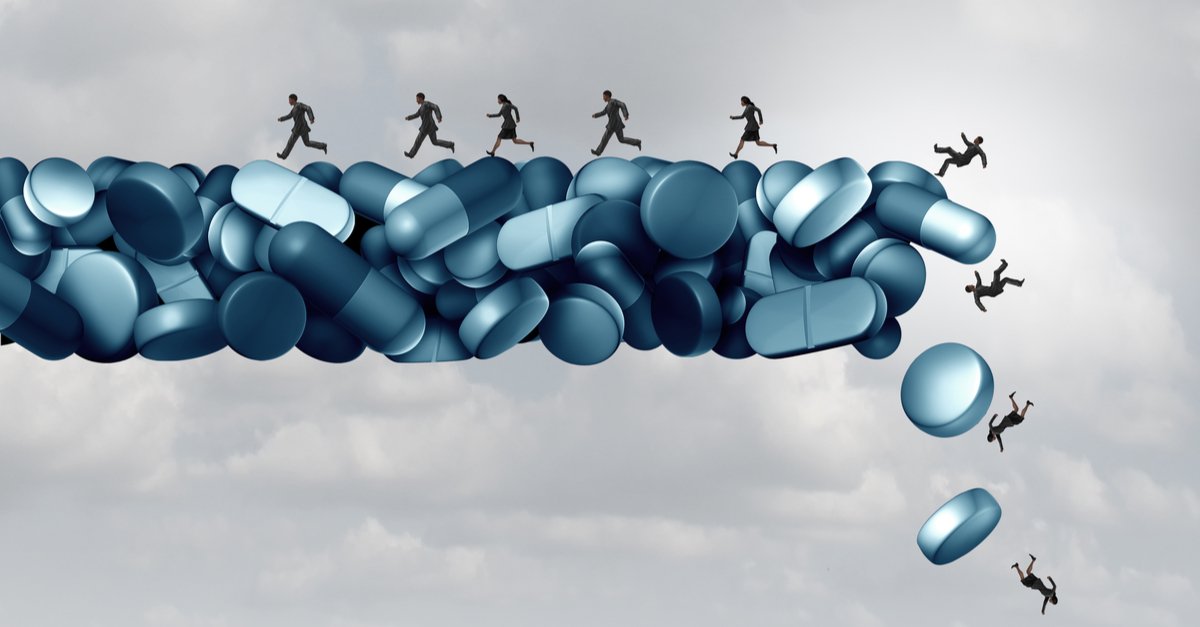 David Fawcett PhD, LCSW
David Fawcett PhD, LCSW
What Are Opioids?
Opioids are a class of drugs that are both naturally occurring and synthetic. Traditionally these drugs were derived from the poppy, a natural source, and were called opiates. These drugs include heroin, morphine, and codeine, among others. An opioid is a synthetic (or partially synthetic) compound such as hydrocodone, oxycodone, and fentanyl, among others. Recently, the term opioid has been used to refer to both natural and synthetic compounds in this class.
Opioid drugs initially create a state of euphoria that is highly addictive. When usage stops, severe withdrawal with uncomfortable cramps and physical distress will occur. Although distressing, these symptoms are generally not considered life-threatening.
Opioids and Sex
Opioids are not typically thought to have strong connections with sexual activity. Instead, they are widely considered to cause sexual dysfunction. They can create a sense of well-being and relaxation, which may contribute to reducing anxiety around sex. But unlike amphetamines, which stimulate dopamine and other excitatory responses, opioids induce sedation and feelings of satiation. They also affect hormonal balances, potentially resulting in sexual dysfunction.
One study[1] of the impact of prescription opioids on the sexual functioning of chronic pain patients highlighted the typical impact of opioids on sex. The study found:
- 54% to 82% of the male opioid dependents suffer from sexual dysfunction.
- Active use of opioids more than doubles the risk of developing sexual dysfunction.
- Opioids affect all the domains of sexual functioning, but sexual desire is the most frequently affected.
- Generally, the more severe the opioid dependence, the greater the chance of having sexual dysfunction.
The term opioids also refers to naturally-occurring endorphins and enkephalins, which occur throughout the body. One subtype, known as beta-endorphins, is highly concentrated in areas of the brain that impact sex, such as the hypothalamus and pituitary. It has been proposed that because beta-endorphins exist naturally within the body, these endogenous biochemicals could have a more beneficial sexual effect (by promoting relaxation and a sense of well-being) than opioids that are ingested.
Opioids, Men, and Sex
In men, opioids have an inhibitory effect on essential hormones such as luteinizing hormone (LH) and testosterone, which can in turn lower endorphin levels. This can result in loss of libido, erectile dysfunction, and an inability to orgasm.
This can also result in opioid-induced androgen deficiency (OPIAD). OPIAD symptoms can include fatigue, a sense of reduced vitality, weight gain, and depressed mood. Persons experiencing these symptoms should have a full hormonal workup to establish any opioid-induced biochemical irregularities.
The opposite occurs during withdrawal from opioids, which is known to result in morning erections, spontaneous ejaculation, and a slow return to normal libido. Such effects can also result from the use of opioid antagonists such as naloxone. (More about naloxone later in this post.)
Opioids, Women, and Sex
Women report a sense of heightened sexual relaxation with opioids and their impact on naturally occurring endorphins. When opioids are combined with serotonin and estrogen, they prevent nervousness. In animal studies, opioids have been shown to increase female receptivity to copulation, but there is no evidence to support this effect in humans.
IV Drug Use and Sex
In general, IV (injection) drug use, including the injection of opioids, is related to higher-risk sexual behavior. In some studies, opioid-dependent persons reported a momentary increase of sexual pleasure after taking heroin along with greatly increased numbers of sex partners, a history of casual partner sex, unprotected sex with casual partners, and poorer overall sexual quality of life. These high-risk patterns have also been observed in adolescents using opioids. For example, a 2017 study[2] found that opioid-using youth were significantly more likely to engage in 22 high-risk behaviors identified in the research.
Some heroin addicts attempt to modulate the drug’s sexual effects. For example, men with premature ejaculation may benefit from the use of opioids at low doses but be unable to maintain an erection at higher doses. At lower doses, women may benefit from relaxation, disinhibition, and mitigation of dyspareunia (painful sexual intercourse) but have a lack of sexual desire and an inability to have an orgasm at higher doses.
Medication-Assisted Therapy (MAT) and Sex
Medication-Assisted Therapy (MAT) has become widely utilized in the wake of the opioid epidemic. The oldest drug used for MAT is methadone, which reduces cravings and withdrawal symptoms and blocks or blunts opioid effects. Methadone is a full agonist (like codeine, morphine, or heroin), meaning it activates opioid receptors in the brain and does have abuse potential.
Naltrexone is another commonly used MAT drug. Naltrexone blocks both the euphoric and sedative effects of opioids and alcohol. There are anecdotal reports that it reduces methamphetamine cravings, as well. It is an opioid antagonist that binds to and blocks opioid receptors and suppresses cravings. Because of this alternate mode of action, it has limited abuse potential.
A third drug utilized for MAT is buprenorphine, a partial agonist, which means it activates opioid receptors but to a much lesser degree than full agonists (like heroin, fentanyl, methadone, and others). Buprenorphine can be prescribed and dispensed in physicians’ offices, and this has given it greater accessibility.
Another drug, suboxone, is a combination of buprenorphine and naloxone. Suboxone is used for maintenance therapy. Naloxone alone is not used for such therapy, but it has great efficacy in dramatically reversing opioid overdoses.
Like the drugs they are meant to treat, MAT medications can impact sexual functioning, although effects vary. For example, it is widely observed that buprenorphine causes less sexual disruption than methadone.[3] By reversing the effects of opioids, naloxone can induce dopamine and oxytocin-related penile erections, but these are often dysphoric (unwanted, not satisfying) for the men who experience them because there is no simultaneous sexual arousal.
* * * * *
[1] Birke, H., Ekholm, O., Højsted, J., Sjøgren, P., & Kurita, G. P. (2018). Chronic Pain, Opioid Therapy, Sexual Desire, and Satisfaction in Sexual Life: A Population-Based Survey. Pain Medicine, 20(6), 1132–1140. doi: 10.1093/pm/pny122.
[2] Bhatia, D., Mikulich-Gilbertson, S. K., & Sakai, J. T. (2020). Prescription Opioid Misuse and Risky Adolescent Behavior. Pediatrics, 145(2). doi: 10.1542/peds.2019-2470.
[3] Yee, A., Danaee, M., Loh, H. S., Sulaiman, A. H., & Ng, C. G. (2016). Sexual Dysfunction in Heroin Dependents: A Comparison between Methadone and Buprenorphine Maintenance Treatment. PloS one, 11(1), e0147852. https://doi.org/10.1371/journal.pone.0147852.
